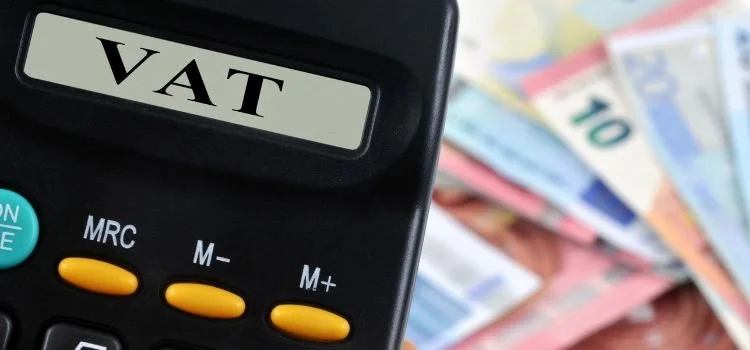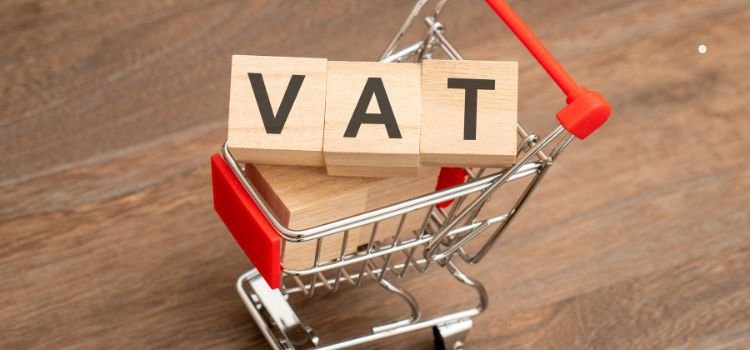Calculating VAT on second-hand jewellery sales
If you run a jewellery business dealing in pre-owned pieces, navigating HMRC rules, margin calculations, and maintaining accurate paperwork can be challenging. Even a small mistake could result in paying more tax than necessary or, worse, penalties for underpayment.
Unlike standard VAT on new goods, second-hand jewellery often falls under the VAT Margin Scheme, which changes how you calculate and report VAT.
This means you don’t pay VAT on the entire selling price, only on the difference between what you bought the item for and what you sold it for. For a high-value item like a £5,000 pre-owned Rolex or antique diamond ring, that difference in calculation can save you hundreds of pounds.
When you understand the rules and apply them correctly, you will not only stay compliant but also protect your profit margins. Plus, with the right process in place, VAT reporting can become just another smooth part of your business rather than a monthly headache.
In this post, you’ll learn exactly how VAT applies to second-hand jewellery, how the VAT Margin Scheme works, and how to make sure your calculations are spot-on every time.
By the end, you’ll have a clear, practical approach that you can apply straight away.
Introduction to VAT on Second-Hand Jewellery in the UK
VAT (Value Added Tax) in the UK is charged on most goods and services; however, when it comes to second-hand jewellery, the rules differ from standard retail VAT.
This is because pre-owned goods, especially high-value items like gold bracelets, diamond engagement rings, and luxury watches, can be subject to the VAT Margin Scheme rather than the normal VAT rules.
The reason for this difference is simple: the government recognises that when you resell a second-hand item, VAT has often already been paid somewhere along the supply chain. Charging VAT on the full resale price again would mean taxing the same value twice.
For example:
If you buy a pre-owned sapphire necklace from a private seller for £1,000 and later sell it for £1,500, under the Margin Scheme, you only pay VAT on the £500 profit margin, not the entire £1,500.
This distinction matters because:
It affects your pricing – You can remain competitive without losing profit to unnecessary VAT charges.
It influences your record-keeping – HMRC requires specific purchase and sales records for second-hand goods.
It impacts compliance – Applying standard VAT where the Margin Scheme should be used could lead to HMRC queries or fines.
For official rules, HMRC has detailed guidance in their manual on VAT: Margin and global accounting schemes.
Understanding the VAT Margin Scheme for Second-Hand Jewellery
The VAT Margin Scheme is designed for businesses that sell pre-owned goods, including jewellery, watches, and antiques.
It’s a simplified VAT method that allows you to calculate VAT only on the margin, the difference between what you paid for the item and what you sold it for.
Here’s how it works in simple terms:
Determine your purchase price – This is what you paid to acquire the item (excluding any VAT if bought from another VAT-registered dealer under normal rules).
Determine your selling price – This is the price you sell the item for (excluding VAT).
Calculate the margin – Subtract the purchase price from the selling price.
Work out the VAT – Apply the VAT fraction (currently 1/6 for the standard rate of 20% in the UK) to the margin.
Example:
Purchase price of pre-owned gold bracelet: £800
Selling price: £1,200
Margin: £400
VAT payable: £400 × 1/6 = £66.67
It’s worth noting:
The Margin Scheme cannot be applied to new goods, precious metals bought as investment items, or goods you’ve imported from outside the UK without paying VAT at import.
You must keep itemised records showing the purchase price, selling price, and margin for each transaction.
This scheme is particularly valuable for jewellers because profit margins can vary widely, and applying VAT on the full sale price could make items harder to sell competitively.
How to Calculate VAT Using the Margin Scheme for Jewellery Sales
Once you understand the basics of the VAT Margin Scheme, the next step is applying it accurately in real transactions.
This is where many jewellers either overpay or underpay because they skip small but crucial details.
Here’s the correct process:
Identify the purchase price
This is the price you paid for the second-hand jewellery item. If you bought it from a private individual, there’s no VAT in that price. If you bought from another VAT-registered business that also used the Margin Scheme, the purchase price is still just the amount you paid, excluding VAT.Identify the selling price
This is the amount the customer pays you for the item, excluding VAT.Calculate the margin
Subtract the purchase price from the selling price. The result is your margin.Apply the VAT fraction
For the current UK standard VAT rate of 20%, the VAT fraction is 1/6. Multiply your margin by 1/6 to find the VAT amount owed to HMRC.
Example Calculation:
Purchase price of a vintage gold pendant: £1,000
Selling price: £1,500
Margin: £500
VAT owed: £500 × 1/6 = £83.33
Key points to remember:
Do not apply VAT to the full selling price, only the margin.
The selling price must be agreed upon before calculating VAT to avoid disputes later.
For mixed sales (e.g., a second-hand bracelet sold alongside a new jewellery cleaning kit), you must separate the items for VAT purposes.
For a full breakdown of the calculation method, HMRC provides detailed examples in their VAT Notice 718.
VAT Margin Scheme for Jewellery Sales
Record-Keeping Requirements for VAT on Pre-Owned Jewellery
Accurate record-keeping is not just a legal requirement; it’s your best defence in case HMRC decides to audit your jewellery business.
Under the VAT Margin Scheme, you must maintain specific records for each transaction, including:
Purchase details:
Supplier name, date of purchase, description of the item, purchase price, and invoice or receipt number.Sales details:
Date of sale, description of the item sold, selling price, and invoice number issued to the customer.Margin calculation:
Purchase price, selling price, calculated margin, and VAT amount based on the margin.
You must keep these records for at least six years, and they can be in digital or paper form, provided they are legible and easy to access.
One effective way to manage this is by using accounting software that supports margin scheme transactions; tools like Xero or QuickBooks Online (UK version) can be set up for this purpose.
Failure to keep complete and accurate records can result in:
HMRC is disallowing the use of the Margin Scheme for future sales
Potential penalties and interest charges for incorrect VAT returns
Remember, good records not only keep you compliant but also make your VAT return process far less stressful.
Common Mistakes to Avoid When Calculating VAT on Jewellery Sales
Even experienced jewellers can slip up when applying VAT rules to second-hand goods.
These are some of the most common mistakes, and how to avoid them:
Applying VAT to the full selling price instead of the margin
This is the biggest error and can make your items unnecessarily expensive or cut into your profits.Not separating mixed sales
Selling a pre-owned ring with a new jewellery box at a combined price? That needs splitting for VAT purposes—margin scheme for the ring, standard VAT for the box.Incorrect margin calculations
Forgetting to exclude certain costs (like repairs or cleaning) from the purchase price can distort your margin figure.Poor or missing records
Without proper invoices, receipts, and margin calculations, you’re leaving yourself open to HMRC penalties.Applying the Margin Scheme when it’s not eligible
You cannot use it for new goods, investment gold, or items where VAT has already been reclaimed on purchase.
Avoiding these mistakes comes down to two things:
Understanding the rules (and staying updated with HMRC guidance)
Keeping meticulous records for every single transaction
When to Seek Professional VAT Advice for Jewellery Businesses
While the VAT Margin Scheme can save you money, it’s not always straightforward, especially when your jewellery business is growing, handling high-value pieces, or dealing with mixed sales.
Knowing when to seek professional VAT advice can make the difference between smooth compliance and unexpected HMRC penalties.
You should consider speaking to a VAT specialist or an accountant experienced in second-hand jewellery sales if:
You’re unsure whether a sale qualifies for the Margin Scheme
For example, buying from overseas suppliers or auction houses can have different VAT implications.You’re dealing with high-value or antique jewellery
Some pieces may qualify for special VAT treatment, such as reduced rates or exemptions.Your business model includes repairs or modifications
Changing an item’s condition before resale can affect how VAT is calculated.You’re expanding into online or international sales
Selling to customers outside the UK can trigger different VAT obligations, especially after Brexit.You’ve had errors or inconsistencies flagged by HMRC
Early professional help can reduce the risk of fines and help put systems in place for compliance.
VAT Advice for Jewellery Businesses
Think of professional advice as an investment, not an expense.
For a relatively small cost, you can get peace of mind and ensure your VAT returns are correct. The right advice can also uncover ways to optimise your pricing and margins while staying within the law.
If you’re looking for reliable guidance, HMRC’s VAT guidance for second-hand goods is a great starting point, but a one-to-one consultation with a qualified accountant will always give you tailored clarity.
Conclusion
Calculating VAT on second-hand jewellery sales doesn’t have to be a daunting task. With a clear understanding of the VAT Margin Scheme, accurate record-keeping, and awareness of common mistakes, you’re already ahead of many in the industry.
The jewellery business thrives on trust, both with your customers and with HMRC. By applying these principles, you not only protect your profits but also strengthen your reputation as a professional, compliant, and reliable retailer.
And remember, VAT compliance is not just about avoiding penalties; it’s about building a business that’s sustainable and ready to grow. Whether you’re selling a vintage gold bracelet at your local shop or expanding into online marketplaces, these skills will serve you well.
So take the time today to review your processes, tighten up your record-keeping, and, if needed, speak to a VAT professional. Your future self—and your bottom line—will thank you for it.
Hope you found this insightful.
Meet Lewis
Lewis is a professional accountant and the founder of Rhombus Accounting. He regularly shares his knowledge and best advice here on his blog and on other channels such as LinkedIn.
Book a call today to learn more about what Lewis and Rhombus Accounting can do for you.




